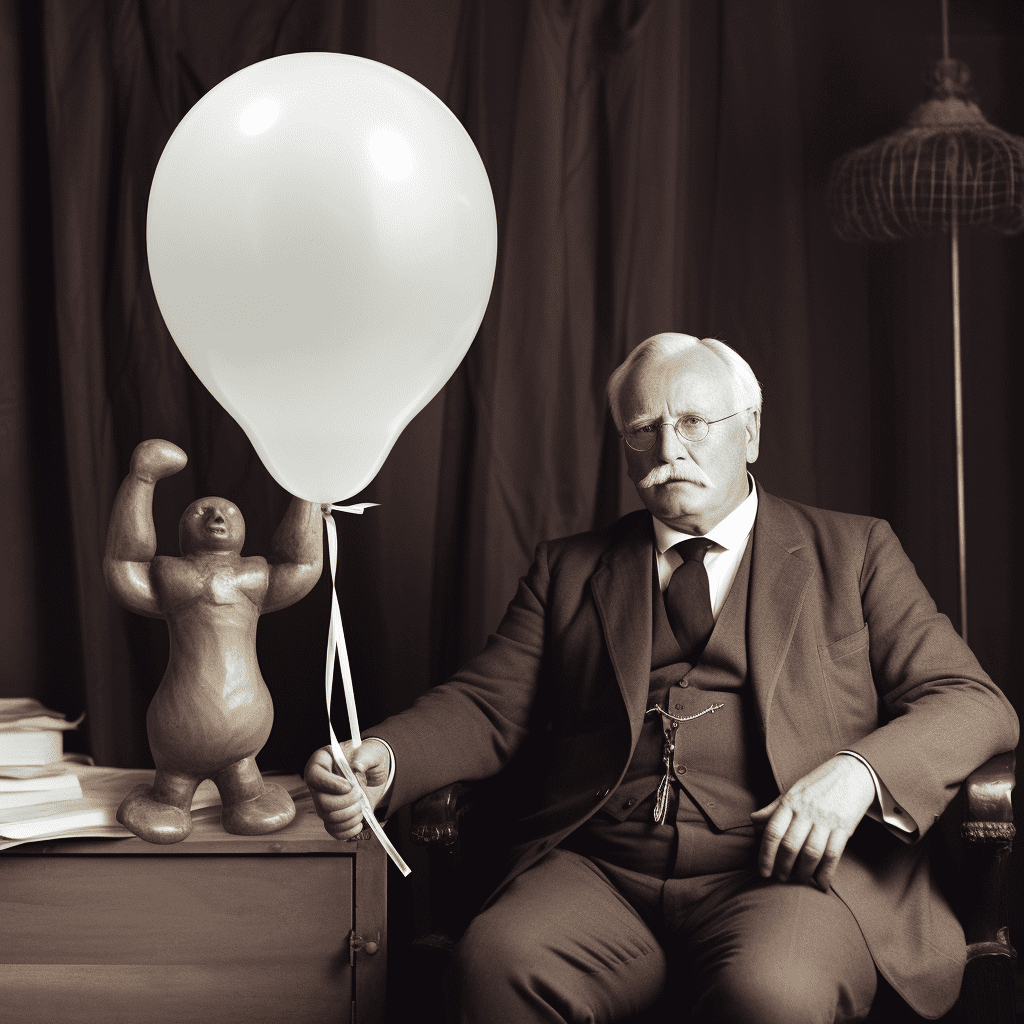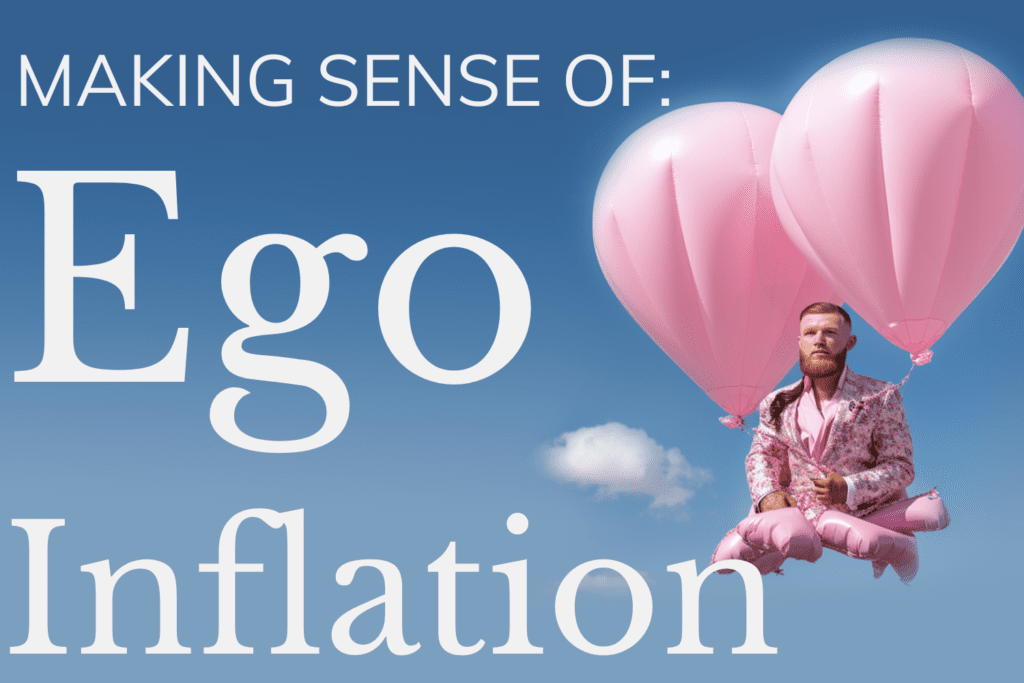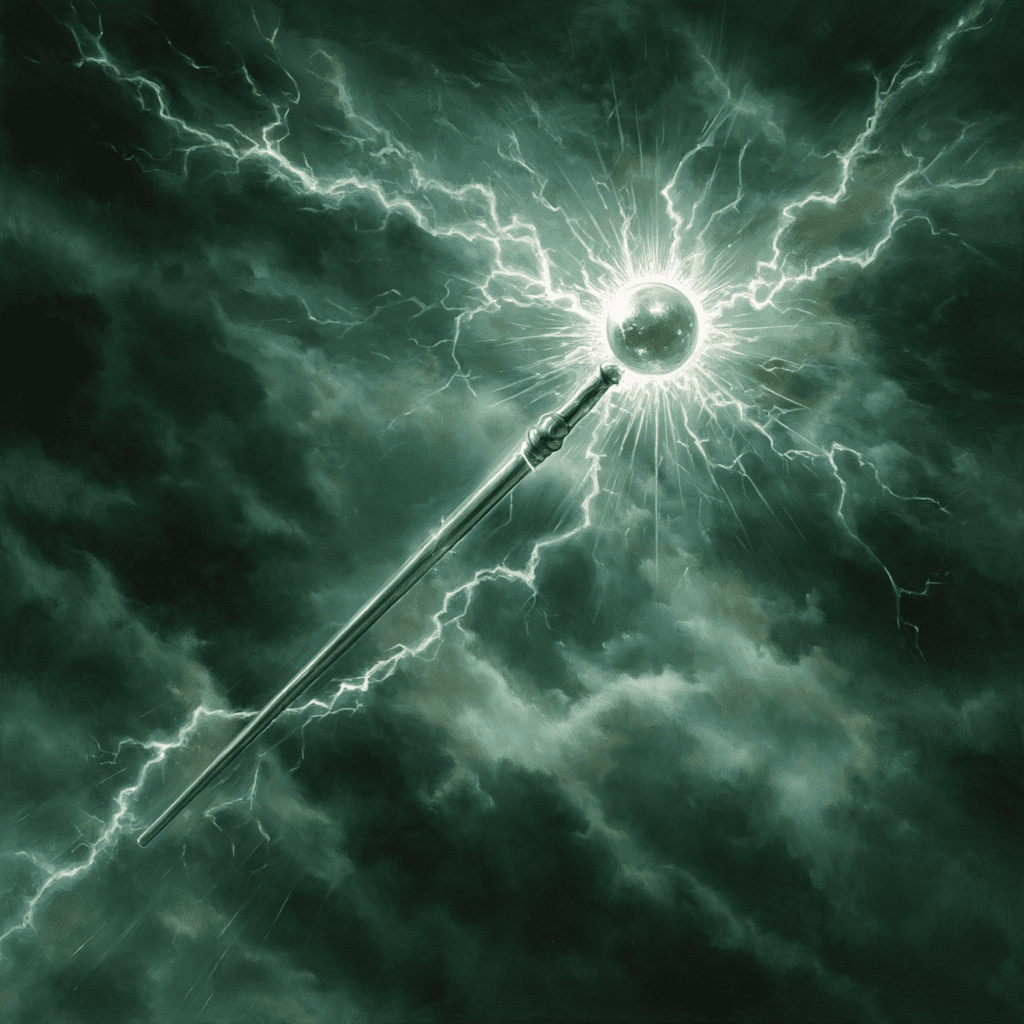As we navigate and individuate in the modern world, understanding and recognising the concept of ego inflation takes on increasing importance. Key to personal evolution, or what Carl Jung defined as ‘individuation,’ is the ability to discern this phenomena.
The world will judge our discernment to be judgement, and lobby us to ignore our conscience and intuition. However, contrary to some interpretations, individuation does not advocate for blind acceptance. Instead, it encourages us to discern reality as it truly is. Identifying ego inflation is not an act of judgement but a critical aspect of discernment.
Carl Jung concurred with this perspective. Throughout his career, he extensively explored the phenomena underpinning neuroses and psychological dysfunction. Despite his profession as a psychotherapist, Jung’s legacy extends far beyond the remediation of mental disorders. His primary focus was on the process of individuation—expanding consciousness beyond the ego/self-image towards one’s true Self, considered the ultimate goal of every individual. Jung understood that what might be classified as a mental disorder on one level could, in fact, be regarded as a spiritual challenge or an obstacle on the path to self-realisation. Jung understood that such challenges were not judgements, but observable phenomena.
He encapsulated this in his observation:
“An inflated consciousness is always egocentric and conscious of nothing but its own existence. It is incapable of learning from the past, incapable of understanding contemporary events, and incapable of drawing right conclusions about the future. It is hypnotised by itself and therefore cannot be argued with. It inevitably dooms itself to calamities that must strike it dead.”

In this article, we will delve into Jung’s insight to explore the concept of ego inflation, why it’s so prevalent in the modern world, and how we can mitigate its effects. We will also provide some guidance on deflating egocentricity within ourselves, fostering greater self-awareness and transformation, and ultimately becoming an example to others.
Ego Inflation Defined
Let’s unpack the first part of Jung’s quote on ego inflation: “An inflated consciousness is always egocentric and conscious of nothing but its own existence.”
This might initially appear perplexing. How can consciousness be aware of nothing but its own existence? Out of context, this could sound like an exalted state of wholeness. However, the difference lies in the fact that this unawareness of anything outside of itself doesn’t stem from a state of integration, but from a state of disinterest in and rejection of the unconscious.
From a practical standpoint, we all believe we can identify and relate to egocentric behaviour; we know what it ‘looks like.’ However, mere observation does little to deepen our psychospiritual understanding or to help us recognise these tendencies within ourselves. In truth, it barely even helps in identifying such traits in others, except for the most extreme and ostentatious forms. And even then, one’s own unconscious can be strewn along in the process, leading to an erroneous admiration of the inflated ego rather than understanding it for what it is. Most instances of ego inflation aren’t as blatant as one might presume. Such a state is often far more subtle, either in reality or due to your own unwillingness to recognise it.
Truly understanding this phenomenon is contingent on understanding the structure of the mind, namely the ego and the Self (also referred to as the True Self, the Higher Self, or our full potential). The ego is the conscious sense of “I,” the self-concept formed from experience. In reality, the ego isn’t ‘who we are,’ but a web of thoughts and assumptions about ourselves. It’s a left-brained snapshot that we live out in our lives. Our interactions with the world are, on some level, encounters with the Self, offering opportunities to resolve conflicts, incorporate new aspects of consciousness and ebb ever more towards alignment with the Self.

An “inflated consciousness” occurs when the ego or self-concept becomes overgrown or dominant, obscuring everything else. It is a fixation on and grasping of the conscious ego by the ego, accompanied by a disregard for any notion of an unconscious. An inflated consciousness views its ideas of itself to be the absolute reality. It has its self-image, and that’s that. It sees the world through the lens of this image, denies the need for growth, and is fundamentally disinterested, even fearful, of the unconscious mind. Of course, it often pretends to be doing the opposite of these things as a form of compensation, a point we will discuss later.
An inflated consciousness can only interpret the things around it in terms of their relationship to itself. Its perceptions, thoughts, and actions are overwhelmingly self-focused and self-referential. While they acknowledge the existence of others and the world, the interpretation of these elements is always in terms of their own pre-existing beliefs, views, desires, and assumptions. In this sense, an inflated consciousness is aware of nothing but its own existence and its own ideas of self.
The Origins of Ego Inflation
An inflated consciousness occurs primarily through the free choice of the concerned individual. Our culture often excuses or overlooks ego inflation, falsely attributing it entirely to the conditions in which an individual was raised. There are countless instances of people raised in tough conditions and who experienced trauma but did not develop inflated egos. To someone undergoing individuation it is quite clear that such thinking is itself the barrier to growth, not the external conditions. This is not to say that such conditions don’t affect an individual, but that they can always make the choice to leverage such experiences for spiritual growth and move towards their true Self. To such an individual, greater challenges simply serve as greater catalysts for growth.
Challenges arise from the mismatch of who we really are and who we deem ourselves to be. Our suffering serves the purpose of moving us towards the elimination of conflicts and thus towards full realisation. We all face rites of passage. Such trials are not “bad,” although they can certainly be painful. The more painful our challenges, the greater the potential for spiritual growth. But to move in that direction is predicated on taking responsibility and cultivating wholesome intentions – Habits 1 & 2 of the Seven Habits of Individuation. These are the foundation of any genuine spiritual path. Without them, transformation is impossible, only mere adaptation. We each have the choice of leveraging challenging encounters for growth, or placating them in the name of ego. Such painful feelings are then cast into the unconscious and remain unprocessed.
We have all experienced painful feelings, and we all have an unconscious. We all, regardless of how it is recognised and understood, ‘have’ an ‘ego,’ because we all ‘have’ a conscious experience. The points being made here are not to criticise or belittle the notion of having unresolved feelings. But they are to delineate and point to a very different kind of phenomenon.

Whilst there are multiple degrees and variations of egocentricity, there is a definable line that is crossed in the case of personality disorders of the narcissistic, anti-social and histrionic variety. This line lies at the point beyond which an individual decides they would rather face death than abandon their self-image. The feelings by which the self-image and their full potential are bound, are simply deemed too much for the ego to handle. Too much has been invested in what has come to pass. Their friends, family, public persona and their income, all apparently depend on this fixed persona. They resist exploring or transforming out of fear of what might unfold if they dared look into their unconscious mind. For the rest of their lives, they will continue attempting to live out their self-image.
Whereas conventional psychiatry regards a lack of empathy as a symptom of Cluster B personality disorders, it would be more accurate to say that such disorders are a symptom of a lack of empathy. Empathy, in turn, extends beyond merely ‘feeling what others feel,’ but is a far more profound quality of mind. It is our very willingness to be transformed by experience. In essence, ego inflation is a lack of empathy.
Perhaps it is not the role of every person to individuate in this life, but for some to simply get to the next step, as far as they can, or to learn one key lesson. Maybe the inflated state serves as this plateau. There is a case for resigning ourselves to the possibility that some are just not born with the potential to go beyond this, but must build on it for next time. Nonetheless inflated egos do serve a kind of role in society at this point in time, since the chaos they create compels those who are capable to keep moving. This is all speculation, and makes little difference to the thrust of this article and how to engage with ego inflation.
Ego Inflation in Modern Culture
Ego inflation is prevalent and celebrated in modern culture. It’s evident in the unwavering cockiness of famous athletes and musicians, in social media culture, in the advertising campaigns of mainstream brands, in corporate workplaces, in the way men and women dress, and in movies and TV that glorify gangsters, crime and violence.
Our modern culture – largely rooted in materialism and the values of Spiral Dynamics Blue and Orange – tends to define personality disorders according to a checklist of observable behaviours. While this approach may have been somewhat useful at some stage, it lacks the accuracy and depth of understanding necessary for individuation. Modern medicine delineates between various personality disorders, many of which can be viewed as manifestations of ego inflation. In coming to understand the principles behind such disorders, and the moral transgressions that follow like the oxcart, we can see not only how their labels and ‘treatment’ are misguided, but also the widespread malignant danger that pervades our culture and yet remains scarcely noticed by materialist minds.

We can point to various mechanisms behind the widespread prevalence of ego inflation. These include our growing disconnection from ourselves, our dwindling interest in authentic spirituality, and an increasing urban population that tends to bypass and even celebrate hostile and arrogant behaviour. All of these stem from a disconnection from mystery, a lack of genuine spiritual leadership, and the fallacy that meaningful progress can be created by wrangling with the material world alone.
Looking holistically, the defining trends of the modern age may not be best defined as cultural or technological – since these themselves are effects of underlying psychological trends. One of the most pronounced yet unspoken about trends is the stark inflation of ego.
This trend is evident in the evolution of popular music over the last century. Honest, artful expression has largely given way to crass, dishonest and manufactured mainstream material. Over just the last couple of years, video content on social media has continued this trend by becoming increasingly rapid and dopaminergic, while diminishing in substance. The process of refining ‘what works’ is iterated upon itself ad infinitum only to create caricatures, hollowed of any deep meaning or transformative value, violating the goodness they purport to represent and serving nothing but egocentricity in itself.
But what causes a psychology to decline in this way? Well I would not say it is a “bad” thing when viewed from a wider perspective. It’s to be expected given our discoveries in rational thought as humanity recovers from spiritual darkness. Throughout the same period, the re-discovery of the unconscious mind presents a commensurate opportunity for spiritual growth. Ego inflation arises from the shadow of the last few centuries of expansion; it is a reality that can be synthesised along with the light aspects of rational thought towards greater understanding.
Just as personal challenges serve as catalysts for an individual’s development, the contradictions of our current psychological meltdown can serve as catalysts for societal maturity, provided that individuals choose to take responsibility for their minds and cultivate wholesome intentions.
Perhaps for us to move towards a more self-aware and authentic world, we first need to experience the full brunt of not being so.
I am under no illusion that insincerity, mindlessness and arrogance will ever vanish from human existence. However, I believe they represent a mere stage in individual and societal development, one that we can and should evolve beyond. I envision a future where these traits are seen not as aspirations, but as part of the growth process, promoting a world where the average biological adult also achieves psychological adulthood.
Impact of Ego Inflation
Jung continues in his quote:
“It is incapable of learning from the past, incapable of understanding contemporary events, and incapable of drawing right conclusions about the future.”
As the ego inflates, it rejects all opportunities for transformation. Everything experienced in the world must be perceived in terms of itself. There is nothing of any spiritual value to be gleaned in it – only to be used to affirm the self-image. This produces a severe handicap when it comes to making sense.
Such an ego can repeat and regurgitate what it has read or heard, but not understand the deeper causes, meanings, and implications of these events. This becomes most apparent as they make erroneous predictions and promises that perpetually fail to materialise.
This creates inevitable disconnect, as being ‘on the same page’ as them ultimately proves itself to be impossible, by anyone. By defending against transformation, they by default deny themselves the capacity for true connection.
Jung continues:
“It is hypnotised by itself and therefore cannot be argued with.”

All of the inflated ego’s encounters must be reconciled with its pre-existing venerable self-image. This image is so tantalising, and its affirmation such an apparent antidote to what ails it, that the ego is truly hypnotised and cannot entertain an existence without it.
The self-image certainly isn’t going to be updated in line with experience – the opposite must occur – the narrative must be updated in line with the self-image – hence producing confabulation, machination and gaslighting. This can appear to ‘work’ for a time. But ultimately it is through this mechanism that an individual condemns themselves to a disorder of personality.
All things must be adapted and manipulated in service of it. This includes other people, whose wellbeing is of no consideration. Any notion of imperfection in themselves must be pinned on something outside of it. It is incapable of being reasoned with in any way that hints at the need for self-examination. They have no mental apparatus with which to discern mere dislike from genuine injustice, and any legitimate pushback against their abuse is assumed to be the latter.
The inflated ego, through its failed encounters with reality and attempts to knock others from their centre, serves only to knock itself out of the facade of sanity. Its machinations become ever more fantastical, its views ever more misaligned, and its stories ever more confabulatory.
It recognises heroes from history, myth and scripture, and identifies itself with the most widely revered. Such is the extent of its commitment to its self-image that it must weave itself in to the mainstream narrative, apparently as the main character.
Its best attempt to deter you from alternative narratives, is not to engage with them directly, but to draw your attention elsewhere. It speaks endlessly of its ability to understand others, and yet avoids any and all work by the great thinkers on such topics, should it cast light on what they’ve hidden from themselves.
It is important to regard such individuals with compassion. However, compassion must be sensibly applied. Any misuse of it will serve only to remind you of how pitifully incapable you are of helping them, or altering their pattern. The best way to ‘help’ someone who isn’t ready to take responsibility might be to cease enabling such deception and allow their self-image to wash up against reality. There is nothing compassionate about trying to delay someone’s encounter with the inevitable.
If you believe in and expect better from people, they generally reciprocate. But there are many exceptions where an ego has gone too far. At the same time, judging or condemning can have the opposite effect, since it can manifest the very qualities we wish to counter as others buy in to our belief. Individuation requires that we neither condemn on one hand, nor fear to call something what it is on the other.
Inflated Ego vs. The Self
Despite the antics of an inflated ego, the Self remains present. The Self is, indeed, the origin of the ego. But it cannot pick up the phone to you, write you an email or communicate in the prescriptive, linear way that the left-brain and ego might desire. The Self expresses itself through our experiences, our search for meaning, and our suffering. However, it is the choice of the individual how to interpret and use these signals. The impulse of an inflated ego is to placate, cut off, or run away from suffering, rather than to explore what it could mean for personal evolution.
The Self, seeking actualisation, exerts a pull on the ego in the direction of wholeness. The inflated ego, oblivious of this dynamic, tries to placate this deep need with material substitutes. It may mimic the appearance of growth by attending personal development seminars or amassing a social media following. It might take on the role of a guru or cult leader to maintain the facade of its fantasy and to garner admiration and validation. It may also turn to other forms of addiction, such as drugs, alcohol, and promiscuity, or dive into spiritual materialism as a diversion. It remains in denial of the consequences of these choices to the point of calamity.

Suffering is an experience exclusive to the ego, the Self cannot suffer. However, in the ego’s attempts to reconcile with the Self’s aspiration, it turns to material substitutes in place of what it really needs, falling in love with the symbol and cheating on the real thing. These substitutes, being mere representations, are ephemeral, and mistaking them for the real necessarily leads to chaos. Hence, through their insistence on maintaining the inflated ego, they “doom themselves to calamities which must strike them dead.”
In essence, they are the architects of their own downfall. However, what “they” really comprise of, stretches far beyond what the conscious ego acknowledges.
Deflating the Ego
My primary aspiration is that through reading this, you become increasingly aware of ego inflation, both in its overt and subtle forms. My hope is that you cultivate the strength to recognise it without fear of passing judgment, and to remain firm in your observations despite societal attempts to overlook, ignore, or even venerate this phenomenon. Many of these responses stem not from ill-intent but from unawareness and a reluctance to explore one’s true nature. Still, these responses are perilous and untenable. Ego inflation endangers everyone and threatens our very civilisation.
Those committed to authentic living, through practices like the Seven Habits, can swiftly recognise the signs of ego inflation. They can see it because it pervades every intention, communication, and action of the inflated individual. Even the most covert manifestations of ego inflation in truth cannot wait to reveal themselves, as long as we allow ourselves to see. It is in fact impossible to be deceived unless at least some small and unseen part of you is complicit in the deception.
My secondary aspiration is that you develop a keen awareness of your own potential for ego inflation. We are all subject to the mechanics of ego-Self interaction, and the need to reconcile with the Self. While there is a distinct boundary that delineates a personality disorder, in theory any person could become malignant through poor choices.
We will now explore what you can do to mitigate the risk of ego inflation within yourself. Since this is one of the best contributions you can make in this modern world, and is a prerequisite for being able to serve as a leader in any meaningful sense.
Deflating the ego involves a comprehensive and robust spiritual practice, incorporating an understanding of the unconscious mind, like the Seven Habits of Individuation. But before we delve into that, let’s discuss two preliminary tips.

The first tip concerns your engagement with urban environments. Do you live in a city or town? What is the prevalent culture and attitude around responsibility, intention and spiritual matters? If it’s like most Western cities, there’s likely an indifference or lack of awareness, with a tendency to overlook or even endorse ego inflation. Be wary of sanctimonious acts of kindness or humility. Ego inflation often disguises itself in these forms. Regardless of its garb, ego inflation correlates with urbanisation more than just about any other factor, especially in countries where there is widespread disconnection from spirituality such as in the west. If you live in such a place, you could consider relocating to a locale with healthier behavioural norms, at least until you are sufficiently grounded in yourself to not to be fundamentally influenced by others’ corrupt intentions.
The same caution applies to online content, particularly social media, which mirrors and magnifies the same malign cultural elements prevalent in urban areas. The advice for managing it is similar.
The second tip is to associate with people who are open to engaging with the unconscious mind and who habitually take responsibility. You will likely encounter groups that purport to be doing just this but on closer inspection are not. If their practices lack a foundation in responsibility and compassion, they will be distorted by misaligned incentives. Don’t be disheartened by this—it’s all part of the learning process. Old friendships can and should be maintained, and will only become richer as a result. The exception of course is any instance that proves to have been malign in light of new understanding.
Fundamental to aligning with the Self is to take responsibility for your mind, the first of the Seven Habits of Individuation. Without taking responsibility for your mind, you cannot make progress toward spiritual growth. This means acknowledging the unconscious, understanding that your conscious experience and ‘self-image’ aren’t synonymous with ‘who you are,’ and having the courage to reconcile with the contents of your own mind.
The second habit involves cultivating wholesome intentions. This builds on the first habit, setting the intention to explore the unconscious mind, let go of our cravings, and embrace what we resist. This is how we release our assumptions and attachments, and come to see ourselves and the world clearly, rather than through the lens of them. Without this, we can neither assess the world accurately, nor be in a position to help others.
The remaining habits—skilful communication, contributing your unique value, managing your state, mindfulness, and dedicated daily practice—continue to build on the first two. These habits foster a connection with our unconscious mind through daily life.
Habit 7, Dedicated Daily Practice, involves purposefully opening up an interaction with the unconscious mind through meditation, active imagination and the divination arts. These are profoundly useful and important tools in individuation. However it should be noted that on their own these too are not enough. Unless they are rooted in responsibility, intention and the accompanying willingness to transform, all forms of practice will serve only to bolster, rather than transform, the ego.
Conclusion
In conclusion, ego inflation, as Carl Jung depicted, represents a state of consciousness that is unwilling to undergo any meaningful transformation, lacks empathy and is excessively self-centred. Overwhelmingly self-referential, an inflated ego struggles to adapt to different viewpoints, consider events objectively, and consider the wider implications of its actions.
Ego inflation is primarily a manifestation of an individual’s personal choices, rooted in an unwillingness to be transformed by the world, i.e. a lack of empathy. This unwillingness produces unresolved insecurities, lingering effects of past trauma, preference for environments that reward self-centred behaviour, a lack of understanding of others, and a deep-seated existential fear of feeling insignificant. These are not so much external ’causes,’ but reflections and interpretations of the individual’s own mind. Ego inflation, being fundamentally a lack of empathy and infatuation with its self-image, dramatically distorts one’s self-perception and serves as a fatal impediment to personal evolution.
In an inflated ego state, individuals often find themselves desperate to uphold a static, unchanging and grandiose self-image. This can lead to a profound disconnection from the vast unconscious aspects of their true personality, resulting in a lack of self-awareness and an inflated sense of self-importance. The inevitable conflict with the True Self can drive these individuals towards behaviours and pursuits that only amplify their disconnect and ultimately lead to personal calamity.
However, by recognising the dynamics of ego inflation and taking deliberate steps to deflate the ego, it is possible to foster a healthier relationship with oneself and others. This involves a connection with the unconscious mind and the practice of a genuine spiritual path, promoting self-awareness and personal growth. It is critical to continue taking responsibility and cultivating wholesome intentions throughout, as the absence of these will engender new forms of ego inflation.
In a world where narcissistic behaviours are glorified, understanding and addressing ego inflation becomes crucial for individuation. It serves as a testament to the timeless relevance of Jung’s work, urging us to strive for self-awareness, personal growth, and a unified consciousness. The journey is challenging but rewarding, offering us a path towards greater harmony within ourselves and with the world around us.


